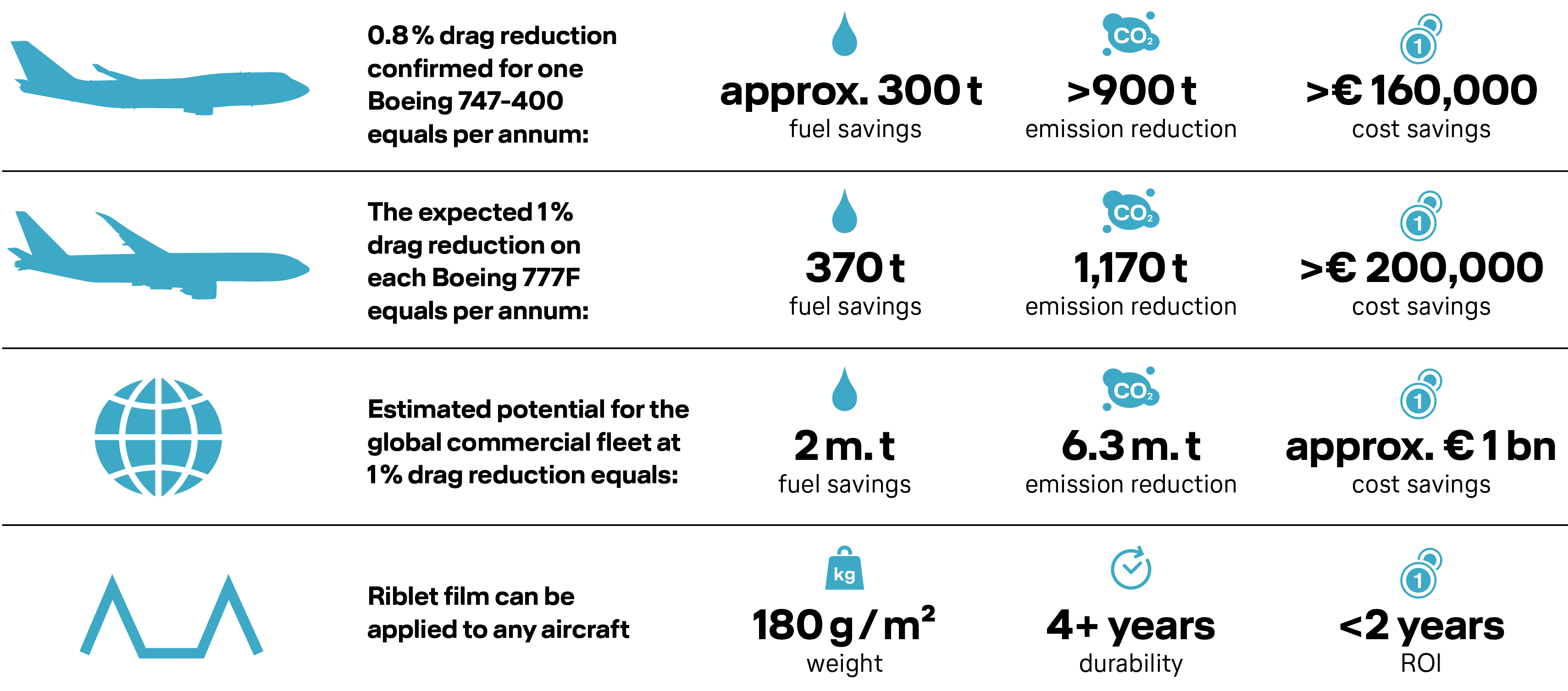When nature acts as a role model: Lufthansa Group and BASF introduce sharkskin technology
The shark is a true master of drag reduction: Lufthansa Technik in a cooperation with BASF thought about the usage of this natural phenomenon and achieved its adaptation for commercial aircraft to reduce fuel consumption and emissions
The developed solution is entitled AeroSHARK and consists of adhesive bionic films that replicate the skin of sharks. The latter`s well-known efficiency is now used to optimize the airflow around the aircraft, thereby enabling significant fuel savings and emissions reduction.
AeroSHARK’s secret lies in the biomimetic film’s microscopic properties. It consists of a barely perceptible texture of small ribbed protrusions – the eponymous riblets. Sized in patches for easy and targeted application, the film has millions of these prism-shaped riblets, each one around 50 micrometers high. Applied to the aircraft in a specific manner and precisely aligned with the airflow, the riblets achieve efficiency gains by reducing skin friction and drag, similar to their counterparts in nature, and can also improve lift if attached on wings.
The riblet film is easy to apply, even on large commercial aircraft – it has already been certified with up to 500 m2 on a Boeing 747-400’s lower fuselage and belly fairing. It is extremely resilient, withstands large temperature shifts and pressure differentials as well as the ultraviolet radiation on high flight levels.
Starting in 2022, Lufthansa Cargo plans to apply approximately 800 m2 of AeroSHARK on each of its Boeing 777F freighters. Here, the expected 1% drag reduction will result in annual fuel savings of 3,700 metric tons and a CO2 emissions reduction of 11,700 tons for ten aircraft. An eleventh aircraft is also to be equipped with AeroSHARK later on. Scaling up this savings potential to a global fleet of around 24,000 aircraft, AeroSHARK could even save around two million tons of kerosene and around 6.3 million tons of CO2 every year.
The riblet technology can be adapted to all kinds of aircraft with a similar effect; hence Lufthansa Technik already plans to certify it for additional surfaces and aircraft types in the near future.
The AeroSHARK effect

Learn more at the original article here.
Related Articles:
MIT and NASA engineers demonstrate a new kind of airplane wing
Next-Generation Composites May Monitor Their Own Structural Health













